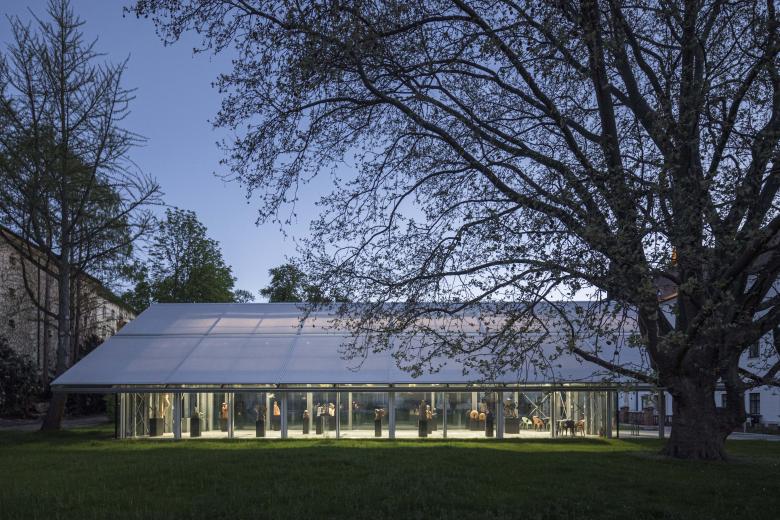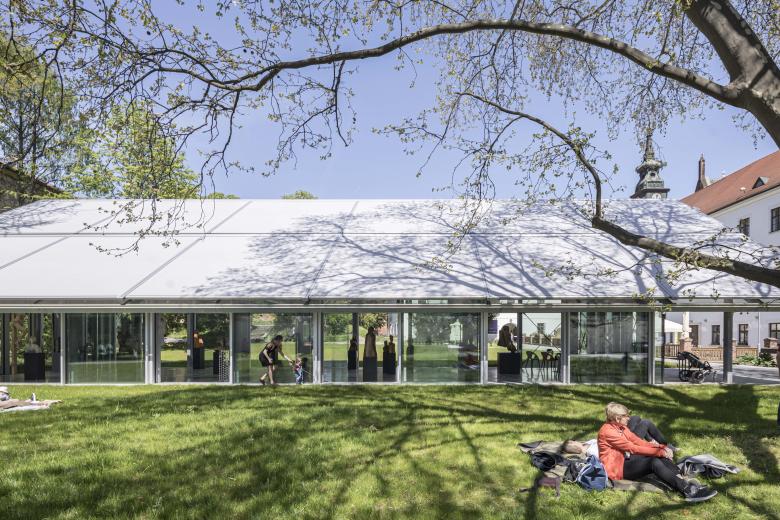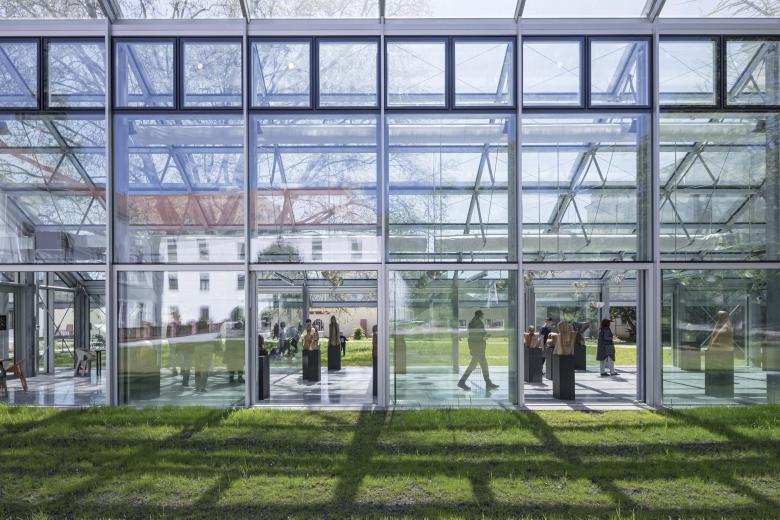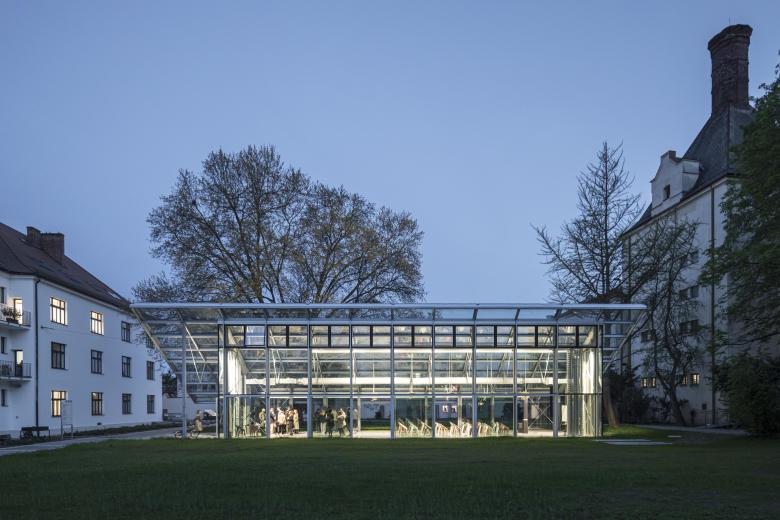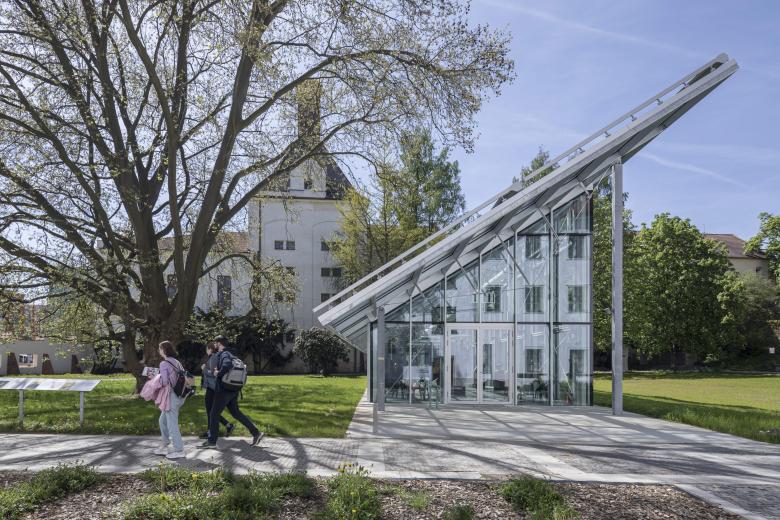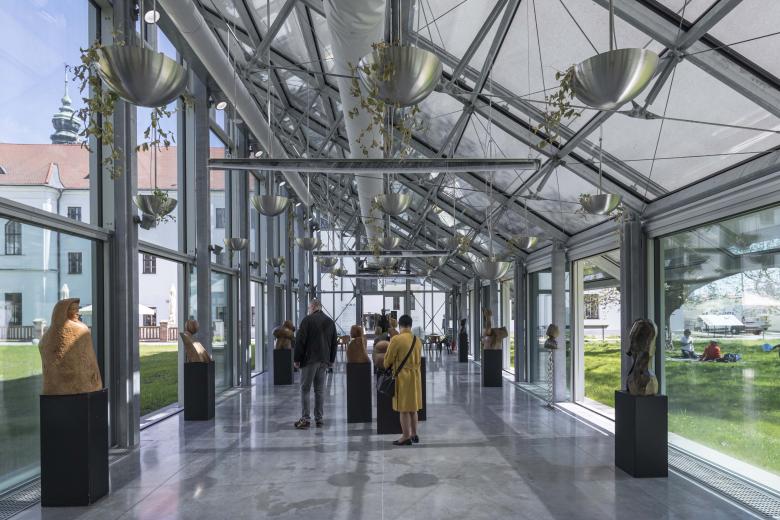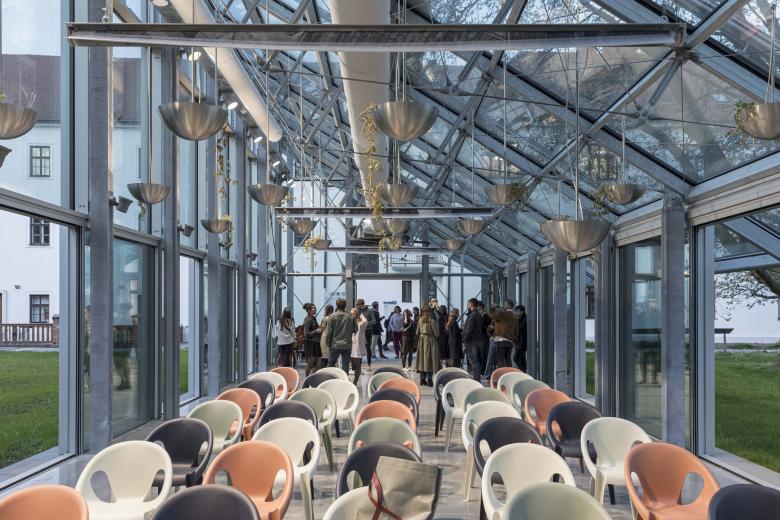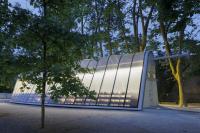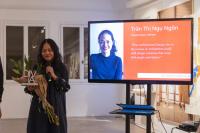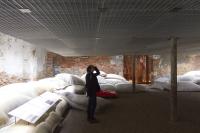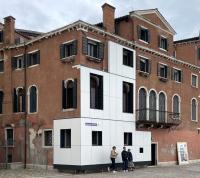Mendel's Greenhouse
Brno, Tchèque
Nestled in the heart of Brno, Czech Republic CHYBIK + KRISTOF honor a historic greenhouse of St. Augustin Abbey with a novel glass and steel structure deeply rooted in the principles of Gregor Mendel’s legacy in modern genetics, emulating his drawings of the hereditary system.
Mendel’s Greenhouse pays homage to scientist and abbot Gregor Mendel's work in genetics and contribution to science, culture and humanity. The new Greenhouse is in direct conversation with the original 19th-century greenhouse of St. Augustin Abbey in Brno, CZ, where Mendel conducted his first pioneering experiments. After being swept by a storm in the 1870s, the historical greenhouse is reinvented by CHK for the first time as a pavilion of genetics, commemorating the 200th anniversary of Mendel’s birth.
Built against the backdrop of the centuries-old Abbey, the new structure establishes an important connection between memory and contemporaneity in service to its community. While the exemplary and highly complex design highlights local history and heritage, the Greenhouse concurrently becomes a brand-new public space for strengthening the local social dialogue, combining innovation with respect for the city’s heritage. Underlining the studio’s engagement in spatial transformations and adaptation of existing structures to fit contemporary times, CHK’s redesign of the historic greenhouse honors Mendel’s legacy while cultivating a new social dialogue to emerge in its community preserving a sense of belonging.
The new Greenhouse designed by CHK continues Abbey’s legacy as a center of science and culture, serving various purposes to its community. With a complete glass structure and fully exposed side walls, the structure opens entirely to the greenery outside the monastery, preventing any visual barriers, and inviting visitors to connect with their heritage and discover the world of genetics. Primarily dedicated to the permanent exhibition of the legacy of Gregor Mendel, the Greenhouse fits the current needs of its community and is open for various cultural events such as international conferences, lectures, and exhibitions.
Drawing inspiration from the archival materials and original scheme of the building, CHK’s design sustains the heritage value of the structure replicating its essence, simultaneously adapting it into a contemporary narrative. Following the original ground plan, the new greenhouse fits seamlessly into the existing urban fabric, as the architects’ reinterpretation echoes the orientation, shape and distinct roof of the greenhouse. A key aesthetic, symbolic but also functional novelty is the reimagined supporting steel roof structure, drawing inspiration from Mendel’s three laws of inheritance. The nodes and branches constituting the steel supportive framing are in direct dialogue with his laws, in particular, that of hereditary segregation. Laid bare by the transparency of the glass roof, the structure both embodies and exposes Mendel’s undeniable contribution to modern science through an ultimate design solution. This honorary addition to the greenhouse preserves the integrity of the scientific invention in a resourceful way, both functionally and aesthetically.
From using simple, cost-efficient and recyclable materials such as steel to the installment of low-carbon cooling and heating systems by the concealed structure of heat pumps, the greenhouse follows CHK’s dedication to creating sustainable and environmentally friendly design. A concealed system of heat pumps, shading and heating, located underground, reveal the building’s sustainable scheme, reliant on its adjustable shades and embedded blinds to ensure natural cooling and ventilation in the summer and heating in the winter – thereby mirroring and revisiting the regulative properties of a greenhouse.
Located at the heart of Brno’s historic area, Stare Brno, St. Augustin Abbey dates back to the 14th century, known throughout history as a significant intellectual center in Moravia with remarkable achievements in both the arts and science. This important academic center now houses the cradle of the world of genetics, a restored greenhouse in its garden is where Gregor Mendel, an Augustinian friar at the monastery, spent eight years conducting his experiments, cultivating pea plants to explore their hereditary physical traits. Ultimately functioning as the monk's outdoor laboratory adjacent so closely to the monastery, the greenhouse restored by CHK serves as a physical reminder of the interchange and connection between science and faith, reviving the community through inclusive social dialogue with the preservation of the histories traced in physical remnants of the area.
‘Although Mendel was stigmatized for his origin and faith by the political regimes of the past, our transformation immortalizes and celebrates the abbot’s substantial achievements to society as a reconciliation with the past ultimately cultivating a sense of belonging. The greenhouse revives the area as a beacon of unlikely harmonious bonds working in service of its community,’ says Ondrej Chybik, co-founder of CHYBIK + KRISTOF.
- Architectes
- Chybik + Kristof Architects & Urban Designers
- Lieu
- St. Augustin Abbey, Mendlovo namesti 157/1, 603 00 Brno, Tchèque
- Année
- 2022
- Client
- St. Augustin Abbey in Brno
- Project documentation
- BABKA & SUCHMA s.r.o.

